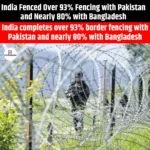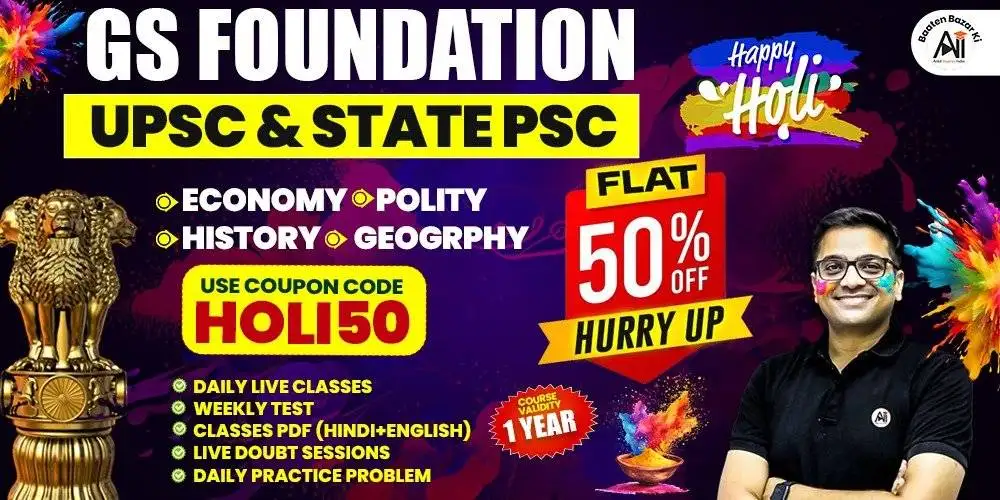Political Crisis in Nepal
|
General Studies Paper II: India’s Neighbouring Countries, Effect of Policies & Politics of Countries on India’s Interests |
Why in News?
Recently, Nepal experienced a deep political crisis as the Prime Minister resigned after youth-led demonstrations against a social media ban escalated into violence. The protests highlighted frustration over corruption and unemployment, shaking the nation’s fragile democratic structure.
Background of Recent Political Crisis in Nepal
- On 4 September 2025, Nepal’s government ordered a shutdown of 26 major social media platforms, including Facebook, WhatsApp, Instagram, X, YouTube, Snapchat, LinkedIn, and Pinterest, because these services did not register with the state as required.
- Youth, particularly Generation Z, viewed the ban as a direct attack on freedom of speech. They felt denied their voice and outlets to connect and express dissent. This sense of silencing ignited protests across Kathmandu and other cities starting 8 September 2025.
- Young people were already deeply frustrated by rampant corruption, nepotism, and poverty.
- The frustration of young citizens, fueled by persistent unemployment and rising poverty, intensified the anger against the government’s decision to restrict online platforms.
- Gen Z turned back to platforms like TikTok and Viber, which remained active because they complied with the registration rules, to organize and voice dissent. Civic groups like Hami Nepal and Safal Workers’ Street Committee helped mobilize the movement using digital tools and community outreach.
- Security forces, including the Nepali Army and police, responded with tear gas, rubber bullets, and even live rounds to control the unrest. The confrontation resulted in at least 24 deaths and hundreds of injuries.
- Cities like Kathmandu faced curfews and protesters stormed the Parliament Building, PM House and Singha Dwar.
- The waves of protests forced the government to lift the social media ban by 9 September 2025.
- Amid the unrest, Prime Minister K.P. Sharma Oli and four key ministers, including the Home Minister Ramesh Lekhak, resigned.
Nepal’s Long Struggle: From Monarchy to Unrest
- Armed Rebellion: In 1996, Nepal entered a turning point when Maoist rebels launched an armed struggle against the monarchy. They promised equality and justice for poor communities and quickly gained support in rural villages. The conflict spread across the country and challenged the long rule of the royal family.
- Civil War: The civil war between Maoists and state forces lasted until 2006. Reports confirm that more than 16,000 people died in the conflict. Finally, a peace agreement in 2006 ended the war. After this settlement, Maoists joined mainstream politics and promised reforms and a new constitution that would transform the lives of common citizens.
- Rise of Republic: In 2008, the Maoists gained victory in elections and the 240-year-old monarchy came to an end. Nepal transitioned into a republic after removing its long-held Hindu kingdom status, marking a historic political shift. The transformation was historic and raised hope among millions. However, these hopes soon faced challenges when governance became unstable and leaders fought more for power than for public welfare.
- New Constitution: In 2015, Nepal adopted a new constitution. The document declared the nation a federal democratic republic with seven provinces. It aimed to create stability and equality after years of violence. The step was praised as a new beginning, but it also triggered debates over inclusion and representation.
-
- Political instability: After 2006, Nepal saw frequent changes of leadership. Between 2006 and 2025, the country changed prime ministers 14 times. Leaders like Pushpa Kamal Dahal ‘Prachanda’, Madhav Kumar Nepal, Baburam Bhattarai, Sushil Koirala, K.P. Sharma Oli, and Sher Bahadur Deuba all took turns in office. No prime minister could complete a full term.
- Call for Monarchy: By 2025, discontent brought back voices in support of monarchy. Former King Gyanendra Shah returned to headlines as crowds in Kathmandu and other cities shouted slogans demanding his return. The Rastriya Prajatantra Party openly led campaigns for a constitutional monarchy.
Reasons for Political Unrest in Nepal
- Political Instability: The country has struggled with instability for decades, and since the restoration of democracy in 1990, not a single government has managed to complete its full tenure. After the monarchy was abolished in 2008, the country saw 14 different governments. Short-lived coalition cabinets became the norm, and frequent leadership changes weakened governance. Groups like the Madhesi community and indigenous organizations raised objections over federal boundaries, representation, and language rights.
- Corruption: Corruption has become a major source of public anger. In 2023, two scandals, the fake refugee case and the Lalita Niwas land dispute, shocked the nation. This widespread misuse of power deepened mistrust between citizens and political leaders. As reported in the Corruption Perception Index 2023, Nepal stood at 110th position globally, showing the depth of governance challenges.
- Economic Struggles: Nepal continues to be one of the world’s least developed nations, with more than 20 percent of its citizens living under the poverty line. In 2015, per capita income was only 680 US dollars. The economy depends heavily on agriculture, which employs more than 70 percent of people and contributes around 42 percent of GDP. In 2023, GDP per capita reached 1,400 US dollars, but this figure was still far below the world average of 12,000 US dollars. Weak growth left large sections of society vulnerable and dissatisfied.
- Unemployment: Unemployment has been one of Nepal’s most pressing issues. Many young people remain jobless or underemployed. Employment generation has lagged behind rapid population growth, leaving the youth unemployment rate among those aged 15–24 consistently high. In 2022-23, youth unemployment exceeded 20 percent.
Effect of Nepal’s Unrest on India
- Security Concerns: India and Nepal share an open frontier stretching over 1,751 kilometers, allowing free movement of people and goods across both nations. Any political unrest in Nepal directly affects security in Indian states like Bihar, Uttar Pradesh, Uttarakhand, Sikkim, and West Bengal. Unrest creates the risk of illegal movement, smuggling, and cross-border crime.
- Impact on Trade: Nepal depends heavily on India for trade and transit routes. India is Nepal’s largest trade partner, accounting for over 65 percent of its imports and exports. India plays a vital role in providing Nepal with key supplies such as petroleum products, food grains, and essential medicines. For India, it reduces export earnings while for Nepal it creates shortages of basic commodities.
- Migration: Large numbers of Nepali workers seek jobs in India because of unemployment at home. Political unrest pushes even more youth to cross the border in search of livelihood. India already hosts hundreds of thousands of Nepali migrants, and instability increases this flow. This situation creates social and economic pressure in border towns.
- Diplomatic Challenge: Nepal holds great importance in India’s regional strategy. Political turmoil weakens India’s influence and gives space for other powers like China to increase their role in Nepal. In recent years, Nepal has leaned closer to China, and today China stands as the largest source of foreign direct investment in the country.









